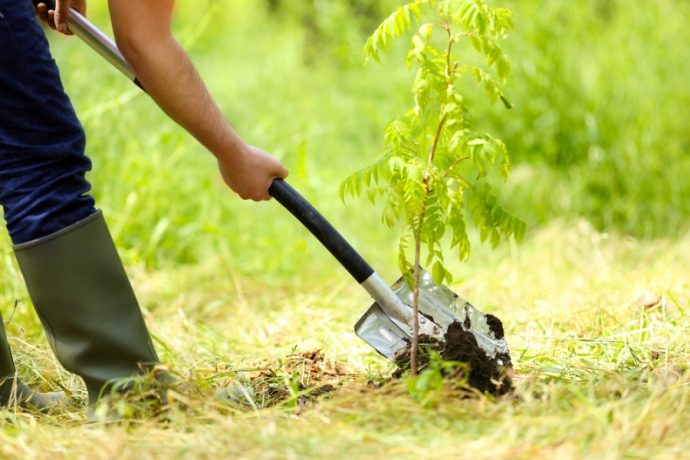When spring rolls around, the plants and trees in your yard will spring to life. Unfortunately, a few of your plants and trees may not have survived the harsh, cold of winter. You may have to decide what to plant, but also what plants and trees need to go.

Inspect Your Trees
The first thing you’ll want to inspect your trees for broken limbs or other damage. If a weak or damaged tree limb breaks and falls, it could damage your home or injure someone. If you see any damage to your trees, 24/7 emergency tree services can help address it.
Spring is also a good time to prune your evergreen trees. If you don’t know how to prune a tree, a 24/7 tree service can do the job for you. Spring is also a good time to fertilize your evergreen trees.
Get Rid of Mulch
Next, you’ll need to get rid of the winter mulch you placed over your sensitive plants. You’ll also need to remove burlap wraps, rose cones, windscreens and any other winter protection you placed around your plants last fall.
Spring is also a good time to get rid of weeds; the soil will be damp and soft, making weed pulling easy. However, don’t throw weeds into your compost pile; they may simply go to seed and grow back, once you use your compost.
You’ll also want to pull up and compost any dead annual plants. Annual plants will not grow back, and any annuals that have self-seeded will already have already done so.
If you didn’t prune your perennials in the fall, they’re probably looking scraggly. Now is the time to prune your perennials, and throw the clippings on the compost pile.
Some shrubs with woody stems, such as buddleia, artemisia, lavender, and caryopteris, should be cut back in the spring because they’ll only bloom on fresh branches. Pruning in the spring will help prevent winter damage, as well as encouraging the plant to grow new flowering branches.
Cut back your ornamental grasses to within a few inches of the ground as soon as you can. You don’t need to wait for new growth. The ornamental grasses will come back strong when they’re ready.
If you have a vegetable garden, clean up any dead plants you didn’t get to last fall, and throw them in the mulch pile. Also untangle any old, dead vines from your trellises and pergolas.
Edge Your Garden Beds
Finally, you’ll want to edge your garden beds, to keep invasive lawn grass out. This will keep your plants and trees in the best condition possible. It will prevent you from prematurely needing to remove plants in your garden beds.
Spring is here and it’s the time for yard work. However, there are instances where you may need to get rid of some plants and trees. Use the above tips as you work in your garden this year.

